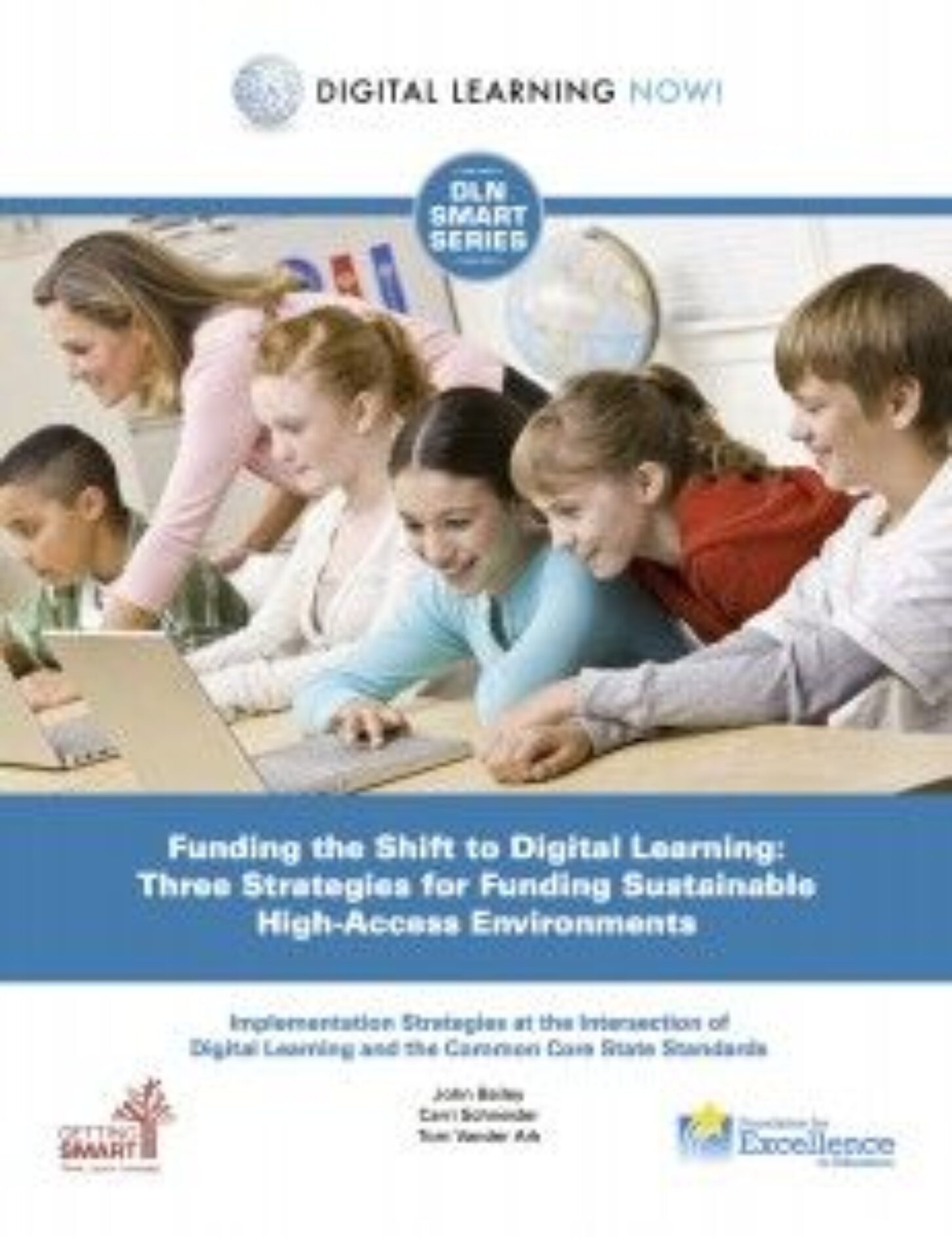
By Eric Wearne
“For state and district leaders, it comes down to two decisions: what devices and who pays.” These are always fundamental concepts surrounding the adoption and implementation of school technology. A new paper by Digital Learning Now! attempts to address both.

According to its website, Digital Learning Now! is “a national campaign to advance policies that will create a high quality digital learning environment to better prepare students with the knowledge and skills to succeed in college and careers.” Convened in 2010, and currently co-chaired by former West Virginia Governor Bob Wise and former Florida Governor Jeb Bush, last week DLN released the first installment in its “Smart Series,” which is meant to be a “collection of interactive papers that will provide specific guidance for policy makers and educational leaders.
(Editor’s Note: “Embracing Innovation in Funding, Choice and Digital Learning will be discussed at the 2012 Georgia Public Policy Forum on Friday September 21 at the W Hotel in midtown Atlanta. Click here for conference information.)
Paper #1 is titled “Funding the Shift to Digital Learning: Three Strategies for Funding Sustainable High-Access Environments,” and does provide some practical guidance around schools might effectively acquire and use technology in the classroom.
Using recent examples from around the country and internationally, this paper discusses the pros and cons of three models:
1. States/districts provide technology (tablets, laptops, or other devices) to every student;
2. Parents are subsidized to provide students with their own devices, or lease devices from a district,
3. A mixed model.
To describe just a few of these examples, in Maine and in Mooresville, NC, the state or district budgeted and paid for the devices. Portugal (which has more of a history of parents paying for textbooks) worked to help parents buy their students devices; Beverly High School in Massachusetts requires students to either purchase or lease a device from the school. Charlottesville, Virginia, meanwhile, followed a mixed model which used “a combination of state technology funds, redeployed instructional materials funds, and a leasing plan.”
Forsyth County, Georgia’s Bring Your Own Technology program is featured prominently in the report (it was also featured on NBC earlier this year). The school system has provided some evidence online of how their schools are using BYOT in practice (see South Forsyth High School, for example).
Circumstances for every state, district, school, and student vary, and so while different levels of school administrators may need or want to work together to improve scalability and purchasing power, the best strategy for implementation is to leave that authority to the most local level possible. Ultimately, this first paper in DNL’s series does a fine job of reviewing what some have tried and of offering practical suggestions.
(Eric Wearne is a Georgia Public Policy Foundation Senior Fellow and Assistant Professor at the Georgia Gwinnett College School of Education. Previously he was Deputy Director of the Governor’s Office of Student Achievement.)
By Eric Wearne
“For state and district leaders, it comes down to two decisions: what devices and who pays.” These are always fundamental concepts surrounding the adoption and implementation of school technology. A new paper by Digital Learning Now! attempts to address both.
According to its website, Digital Learning Now! is “a national campaign to advance policies that will create a high quality digital learning environment to better prepare students with the knowledge and skills to succeed in college and careers.” Convened in 2010, and currently co-chaired by former West Virginia Governor Bob Wise and former Florida Governor Jeb Bush, last week DLN released the first installment in its “Smart Series,” which is meant to be a “collection of interactive papers that will provide specific guidance for policy makers and educational leaders.
(Editor’s Note: “Embracing Innovation in Funding, Choice and Digital Learning will be discussed at the 2012 Georgia Public Policy Forum on Friday September 21 at the W Hotel in midtown Atlanta. Click here for conference information.)
Paper #1 is titled “Funding the Shift to Digital Learning: Three Strategies for Funding Sustainable High-Access Environments,” and does provide some practical guidance around schools might effectively acquire and use technology in the classroom.
Using recent examples from around the country and internationally, this paper discusses the pros and cons of three models:
1. States/districts provide technology (tablets, laptops, or other devices) to every student;
2. Parents are subsidized to provide students with their own devices, or lease devices from a district,
3. A mixed model.
To describe just a few of these examples, in Maine and in Mooresville, NC, the state or district budgeted and paid for the devices. Portugal (which has more of a history of parents paying for textbooks) worked to help parents buy their students devices; Beverly High School in Massachusetts requires students to either purchase or lease a device from the school. Charlottesville, Virginia, meanwhile, followed a mixed model which used “a combination of state technology funds, redeployed instructional materials funds, and a leasing plan.”
Forsyth County, Georgia’s Bring Your Own Technology program is featured prominently in the report (it was also featured on NBC earlier this year). The school system has provided some evidence online of how their schools are using BYOT in practice (see South Forsyth High School, for example).
Circumstances for every state, district, school, and student vary, and so while different levels of school administrators may need or want to work together to improve scalability and purchasing power, the best strategy for implementation is to leave that authority to the most local level possible. Ultimately, this first paper in DNL’s series does a fine job of reviewing what some have tried and of offering practical suggestions.
Eric Wearne is a Georgia Public Policy Foundation Senior Fellow and Assistant Professor at the Georgia Gwinnett College School of Education. Previously he was Deputy Director of the Governor’s Office of Student Achievement.

